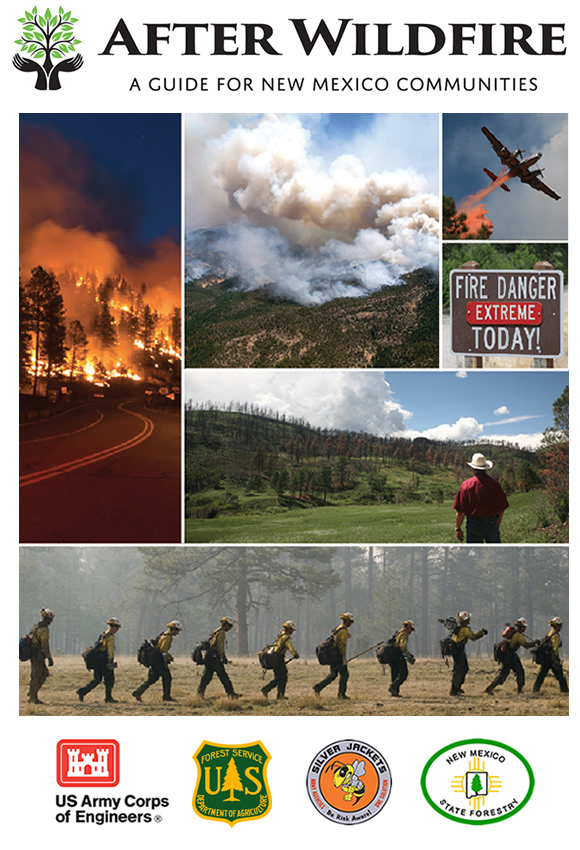
Additional Resources
Highlighted Resources
There are many additional resources for communities and individuals beyond this guide. Below are a few featured resources.
- Preparing for After the Fire is a powerful short movie to help communities think ahead about wildfire response created by the Chumstick Wildfire Stewardship Coalition in WA. Use this discussion guide along with the video.
Preparing for After the Fire from Hilary Lundgren on Vimeo.
- Wildfire Season in New Mexico is an easy-to-use, condensed brochure of useful information before, after, and during a wildfire. It also contains information on defensible space for your home.
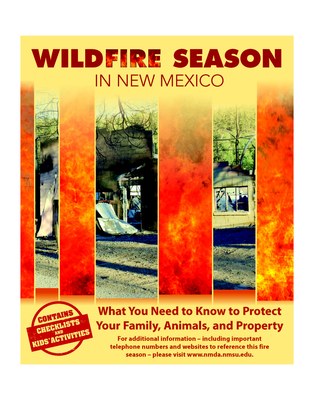
- 'After the Fire' Toolkit provides ready-made communication tools for your community after a wildfire.
- Recovers.org is a tool to help communities match volunteers to needs after a disaster. They also offer an inspiring TED talk about community response to disasters.
- Team Rubicon unites the skills and experiences of military veterans with first responders to rapidly deploy emergency response teams to disasters such as wildfires.
- There's An App for That: Apps for disaster response to upload to your smartphone now.
- Wildfire Planning resources to prepare before a wildfire occurs.
Immediate Needs
For information on food and shelter, click here.
For information on who can help individuals and families, click here.
For information on helping children deal with disaster, visit www.fema.gov or get a copy of FEMA 478 Helping Children Cope with Disaster here. You may also call the FEMA publications warehouse at 1-800-480-2520 to obtain this and other publications. More information is available at the Department of Homeland Securities’ www.ready.gov. You may also visit Sesame Street's Helping Children Understand Natural Disasters.
The Disaster Distress Helpline
The Disaster Distress Helpline is free and confidential, and helps with emotional distress after a disaster, 1-800-985-5990.
The link address is: http://disasterdistress.samhsa.gov/
Apps
Here are some apps for mobile devices that may be useful after a wildfire or other natural disaster.
- The FEMA Mobile App helps you plan for and respond to natural disasters.
- The First Aid App from the American Red Cross may help in response to natural disasters.
- ReUnite helps connect lost family members and friends in a disaster situation.
- Wildfire from the American Red Cross provides wildfire news and updates, and helps you prepare and respond.
- Weather Underground
- Dark Sky weather information ($3.99)
Wildfire Planning
Wildfire Planning Resources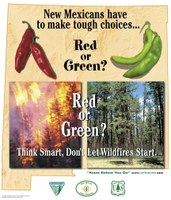
- Small Steps Can Save Homes, Communities: This 2014 article from National Geographic outlines small steps that you can do to help protect your home.
- Living with Fire: A Guide for the Homeowner - New Mexico: Short guide to help New Mexicans learn how to live more safely with the threat of wildfire (see the Spanish version here).
- Viviendo Con Incendios: Una Guía para los Dueños de casas en Nuevo México (en Español): Una guía para enseñarles a las personas cómo vivir más seguros con la amenaza de un incendio forestal.
- Community Wildfire Protection Plans from New Mexico State Forestry: Community Wildfire Protection Plans (CWPP's) have three main components: (1) Collaboration with all stakeholders throughout the CWPP process, (2) Identification and prioritization of hazardous fuel reduction areas and (3) addressing the treatment of structural ignitability within the CWPP area.
- Fire Adapted Communities provides a 'go-to' reference document, the 'Guide to Fire Adapted Communities' wildfire preparedness. It offers actions you and your community can take to become more fire adapted. It also includes recent case studies and outlines considerations to take to increase awareness and affect change in local wildfire preparedness understanding, and includes outreach and collaboration guidance.
- New Mexico's Department of Homeland Security and Emergency Management's (NMDHSEM) Hazard Mitigation Site: The Mitigation Unit can help you access your community hazard mitigation plan, develop a plan for your community and find FEMA mitigation program guidance.
- Tribal Hazard Mitigation Planning Guide from FEMA : This guide will assist Indian Pueblo and Tribal governments assess their risk and create a plan to protect their members and resources.
- Local Mitigation Planning Handbook from FEMA: The Local Mitigation Planning Handbook (Handbook) is the official guide for local governments to develop, update and implement local mitigation plans.
- Wildfire Preparedness and Planning at Ready.gov: Learn what protective measures to take before, during and after a wildfire.
- Firewise Communities: Find out what experts know about the best ways to make your home and neighborhood safer from a wildfire.
- A Guide to Staying Safe During Wildfires: This all-in-one guide delivers the essential strategies and tactics to keep you safe from wildfire — no matter where you live.
- Western Oregon University CERT Resources: CERT is about readiness, people helping people, rescuer safety...
- Colorado State University Extension Fire Resources: The most up-to-date fire-related resources, from CSU Extension and our partnering agencies.
-
Driftless Prairies: Native Ecosystems-The Interaction of Fire and Grass: Understanding the biology and physiology of grass in management decisions
Wildfire Recovery Guides from Other Sources
The After the Fire Toolkit was designed to allow community coalitions, local wildfire coordinating groups, fire districts and other wildfire organizations to respond to post-fire community needs quickly, accurately, and comprehensively. It includes items such as templates for Public Service Announcements, doorhangers and more.
The Phoenix Guide
The Phoenix Guide is a handbook for watershed and community wildland fire recovery, and provides information on the impacts of wildfire, community engagement, the recovery process, restoring landscapes, volunteer liability, and grants.
Community Wildfire Desk Guide & Toolkit
This is a good, condensed comprehensive resource for communities developed by the National Association of Conservation Districts. It includes post-wildfire information such as obtaining and delivering assistance, revitalizing the local community, and identifying threats of flooding.
Recovering From Wildfire: A Guide for Arizona’s Forest Owners
This guide from Arizona Cooperative Extension focuses on resource damages, erosion control measures, and assessing tree damage.
Burned Area Rehabilitation Guide from the Natural Resources Conservation Service in New Mexico.
Social Networking Resources
Social media is an opportunity to get timely updates related to wildfire in New Mexico, and to learn more about resources that are available.
 Sign up for New Mexico State Forestry's free wildfire email alert service.
Sign up for New Mexico State Forestry's free wildfire email alert service.
 Twitter:
Twitter:
- Weather: @NWSAlbuquerque
- Southwest Coordination Center provides updates on almost every fire, big and small, in New Mexico: @SWCCNewsNotes
- NM Emergency Management: @NMDHSEM
- NM State Forestry: @NMStateForestry
- NM Fire Info: @NMFireInfo
- Information on National Forests: @USFSSouthwest; @SantaFeNF; @CarsonNF; @CIBOLA_NF; @LincolnUSForest; @gilanforest
 Facebook
Facebook
- New Mexico State Forestry
- Sesame Street's Helping Children Understand Natural Disasters
- InciWeb, an interagency all-risk incidient web information management system provided by the US Forest Service
- NM Fire Info
- United States Wildfire Emergency Alerts
- National Interagency Fire Center
- USDA Forest Service
- Bureau of Land Management, New Mexico
- American Red Cross New Mexico
Toolkit Outreach Materials
Outreach materials area already designed – all you have to do is enter your contact information, change the resources to be appropriate for your community, and start getting the word out.
Within this toolkit you will find the following:
- Doorhanger (PDF, door hanger_back, door hanger_back customizable, door hanger_front)
- Be Prepared Public Service Announcement (Microsoft Word, Know Your Risks PSA) 30 and 60 seconds
- Resilience Public Service Announcement (Microsoft Word, Resilience PSA) 30 and 60 seconds
- Press Release (Microsoft Word, Press Release)
- Brochure, Action-focused
- What You Need to Know: Weather and Flooding one-pager (PDF, NOAA Radio reduced file size, NOAA Radio (300 dpi))
- Business Resilience one-pager (Microsoft Word and PDF, Business resilience 1 pager, Business resilience 1 pager customizable)
- Facebook/Twitter posts (Microsoft Word Twitter_Template)
All of the above resources are designed to be customizable for your community. No special software or printing capability is needed. Any computer capable of opening, editing and printing a Microsoft Word and/or PDF file is able to utilize the materials within the toolkit.
The Toolkit was put together by the Chumstick Coalition, a member of the Fire Adapted Communities Learning Network. For questions regarding the After the Fire toolkit, please email director@chumstickcoalition.org.
USGS New Mexico Debris Flow Hazard Studies
Want to learn more about post-wildfire flooding? U.S Geological Survey has produced three reports modeling post-fire debris flows. The reports include information such as the areas of the highest probability of the largest debris flows during flooding some recent New Mexico wildfires. You can see the completed reports at the links below. Also, USGS may help communities before or after a wildfire, including early warning rain and stream gauges and debris-flow modeling.
|
For more information, call (505) 830-7905 or visit the USGS Water Resources of New Mexico site here. |
http://pubs.usgs.gov/of/2012/1188/ofr2012-1188.pdf (Whitewater-Baldy)
http://pubs.usgs.gov/of/2011/1308/ (Las Conchas)
http://pubs.usgs.gov/of/2011/1257/ (Track Fire)
Guide Contributors
This effort was led by New Mexico State Forestry, with funding and input provided by the USDA Forest Service. We would like to extend special thanks to the following individuals, agencies and organizations who helped us develop this guide: USDA Natural Resources Conservation Service, New Mexico Association of Counties, New Mexico Forest and Watershed Health Coordinating Group, New Mexico State University, and the US Army Corps of Engineers. A special thanks to Madeleine Carey and Ryan Weiss for their work on the guide, and to the Forest and Watershed Restoration Institute for hosting this website.
Other contributors also helped by providing information and feedback, including the New Mexico Department of Homeland Security and Emergency Management.
 New Mexico Association of Counties
New Mexico Association of Counties
NM Association of Counties
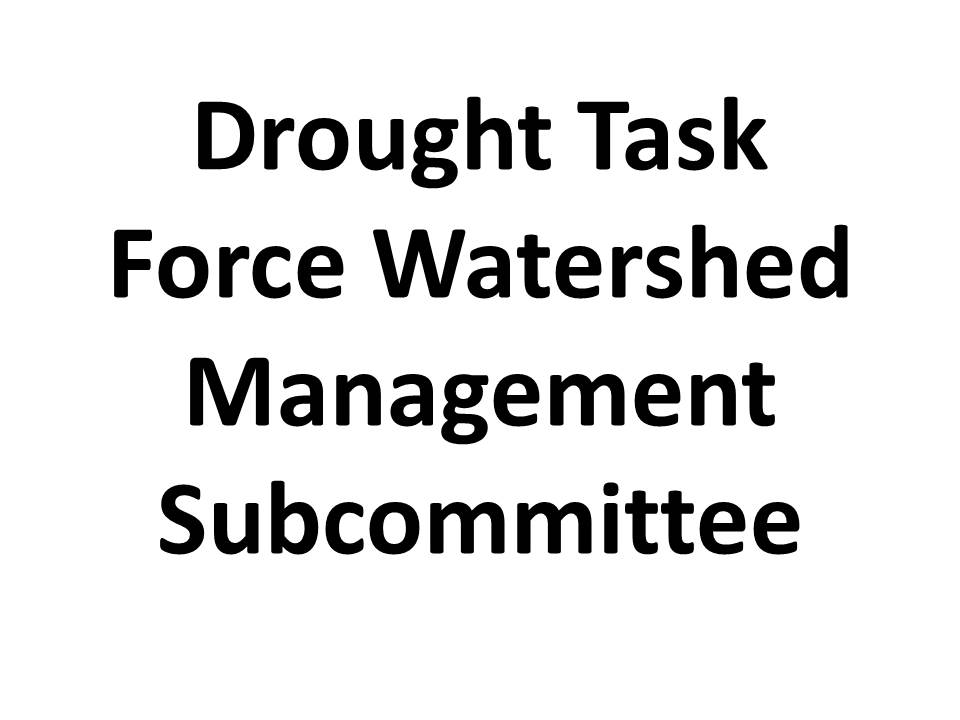 Drought Task Force Watershed Management Subcommittee
Drought Task Force Watershed Management Subcommittee
The Watershed Subcommittee is a broad-based, action oriented collaborative group that coordinates watershed management in New Mexico. Member entities help implement action items in the New Mexico Forest and Watershed Health Plan and the State Forest Action Plan. Members represent twenty agencies, non-governmental organizations and the private sector, including: Bureau of Indian Affairs, Bureau of Land Management, Bureau of Reclamation, New Mexico State Forestry Division, Interstate Stream Commission, Natural Resources Conservation Service, New Mexico Association of Conservation Districts, New Mexico Coalition of Conservation Districts, New Mexico Department of Agriculture, New Mexico Department of Game and Fish, New Mexico Environment Department, New Mexico Forest and Watershed Restoration Institute, New Mexico Forest Industry Association, New Mexico State University, NMSU Mora Research Center, Office of the State Engineer, Range Improvement Task Force, State Land Office, The Nature Conservancy, US Fish and Wildlife Service and US Forest Service.
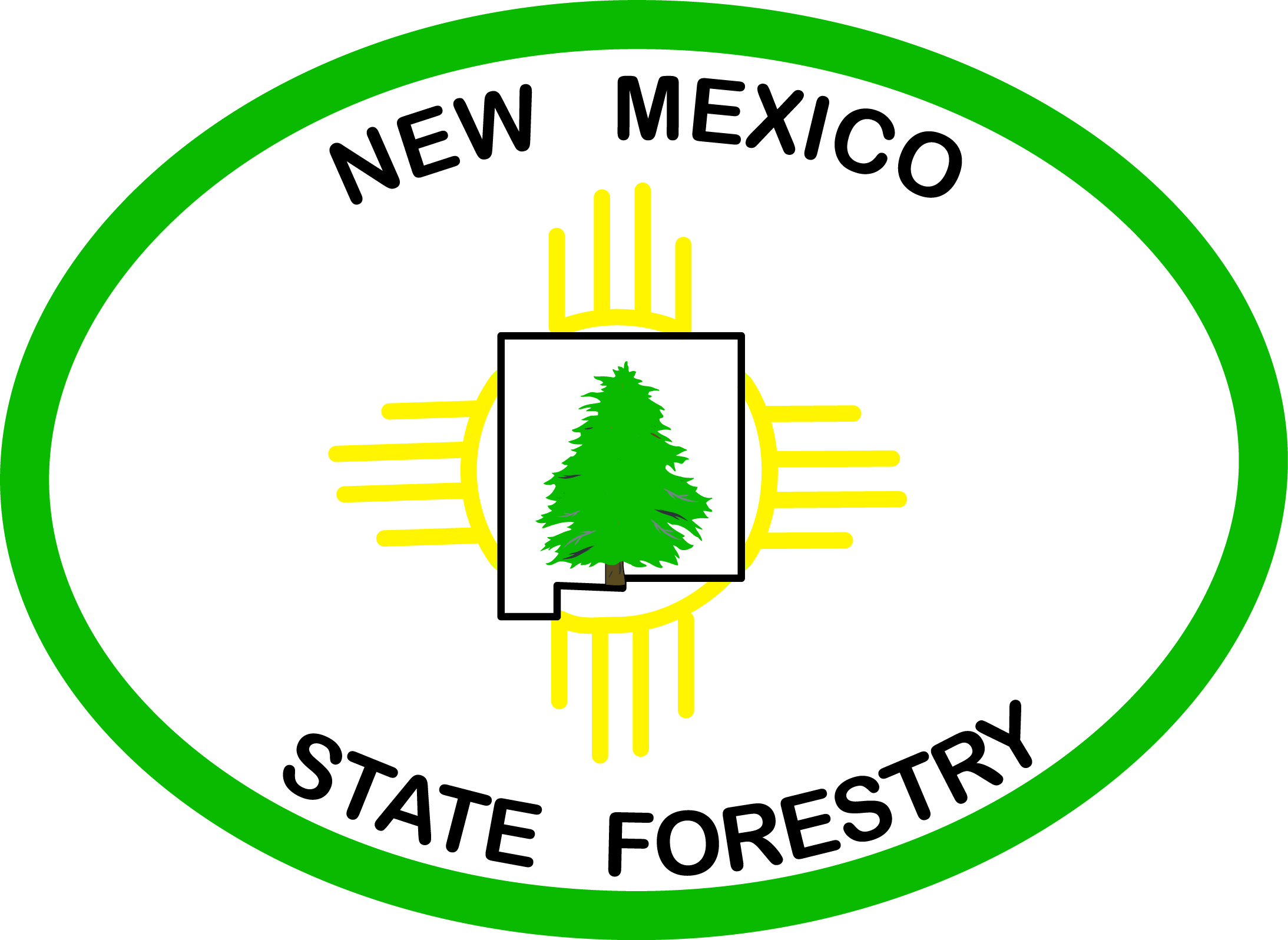 New Mexico State Forestry Division, Energy Minerals and Natural Resources
New Mexico State Forestry Division, Energy Minerals and Natural Resources
The New Mexico State Forestry Division (Forestry) retains lead responsibility for wildland fire management on non-federal and non-municipal lands, maintaining fire suppression capacities and emphasizing firefighter and public safety. Forestry promotes healthy, sustainable forests in New Mexico for the benefit of current and future generations.
 New Mexico State University
New Mexico State University
New Mexico State University is the state's land-grant university, serving the educational needs of New Mexico's diverse population through comprehensive programs of education, research, extension education, and public service.
 US Army Corps of Engineers
US Army Corps of Engineers
US Army Corps of Engineers
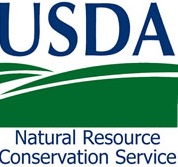 USDA Natural Resources Conservation Service
USDA Natural Resources Conservation Service
USDA Natural Resources Conservation Service
 USDA Forest Service
USDA Forest Service
USDA is an equal opportunity provider, employer and lender. To file a complaint of discrimination, write to USDA, Office of the Assistant Secretary for Civil Rights, Office of Adjudication, 1400 Independence Ave., SW, Washington, DC 20250-9410, or call (866) 632-9992 (toll-free customer service), (800) 877-8339 (local or federal relay) or (866) 377-8642 (relay voice users).
Wildfire Information
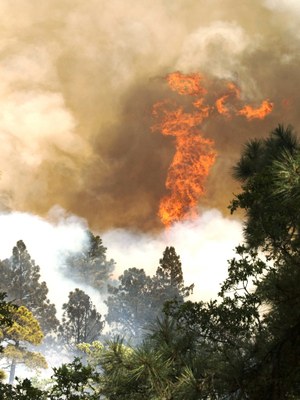 Information on Wildfires Anywhere in the U.S., including New Mexico: click here.
Information on Wildfires Anywhere in the U.S., including New Mexico: click here.
Information Focused on New Mexico Wildfires: Information specifically focused on wildfires in New Mexico can be found here.
Alerts: You can sign up to receive New Mexico State Forestry’s wildfire alert emails for timely updates about wildfires burning on state and private lands. Some county offices of homeland security and emergency management offer a free cell phone text alert service.
Emergency Alerts from Nixle: Go to this link for emergency alerts delivered to your cell phone and email at no cost.
Emergency Notification (reverse 911, CodeRED): Many communities and institutions have automated emergency notification systems that will send alerts to your cell phone. Contact your law enforcement agency to find out if a local system is available, and sign up if one is.
NOAA Fire Detection Program: Analyzed fires and smoke from satellite.
Smoke and your Health: The New Mexico Department of Health provides information to help protect your health from smoke during wildfire: click here.
Planning for Wildfire: click here.
Weather Information
NOAA's (National Oceanic and Atmospheric Administration) National Weather Service provides training and is a local resource for providing a 24/7 weather watch.
Site Disclaimer
This guide is a collaborative work by land management agencies and local government organizations in New Mexico. It is intended to be used for informational purposes only. It is not intended to substitute for legal or professional advice. The material in this guide was compiled to help community leaders find the best currently available information in one place for communities that have experienced a destructive wildfire. Readers should be aware that such information is subject to change over time and will not apply to all communities or all post-fire situations.
We recognize that the range of assistance offered to communities and individuals in New Mexico may not meet all of the many needs that can arise after a wildfire. Gaps in services and financial assistance do exist. This guide attempts to communicate to communities and individuals the ‘lessons learned’ from other New Mexico communities, outline what help is currently available, and provide some information on rehabilitation practices that may be employed after a wildfire has occurred. We hope this guide assists you on your journey of recovery from a destructive wildfire.
We welcome your feedback on this guide.
Publications and PDFs
PDF of Condensed Version of the Guide
Hot off the press! Click above to find a condensed, printable, downloadable version of the 'After Wildfire: A Guide for New Mexico's Communities."
Post-Fire Treatments PDF
Communities often do not know where to start with post-fire treatments to reduce risk from post-fire flooding or to restore burned land. This pdf contains information on post-fire treatments for burned areas after a wildfire. It is a static version of the Post-Fire Treatments section of the After Wildfire website.
 Post-Fire Treatments - A Primer for New Mexico Communities_2015.pdf
Post-Fire Treatments - A Primer for New Mexico Communities_2015.pdf
PDF document, 2617 kB (2680339 bytes)
Publications from New Mexico State Forestry
Learn about wildfire preparedness and more at New Mexico State Forestry's publication page,
http://www.emnrd.state.nm.us/SFD/Publications/PubsMain.html.
Sandbagging Techniques
The use of sandbags is a centuries old, tried and true method for flood fighting. See procedures and safety tips inside on efficient bagging operations.
 NWD_Sandbag_Pamphlet.pdf — PDF document, 6995 kB (7163293 bytes)
NWD_Sandbag_Pamphlet.pdf — PDF document, 6995 kB (7163293 bytes)
US Army Corps of Engineers Program PDF Pages USACE Section 1135
This fact sheets outline the USDA programs described in the Who Can Help - Communities section. This pdf contains more information on the US Army Corps of Engineers CAP program on Project Modification for Improvement to the Environment.
 Sec 1135.pdf — PDF document, 621 kB (636314 bytes)
Sec 1135.pdf — PDF document, 621 kB (636314 bytes)
US Army Corps of Engineers Program PDF Pages USACE Section 14
This fact sheets outline the USDA programs described in the Who Can Help - Communities section. Information on the CAP Program Section 14 about Emergency Stream bank and Shoreline Erosion Protection.
 Sec 14.pdf — PDF document, 636 kB (651642 bytes)
Sec 14.pdf — PDF document, 636 kB (651642 bytes)
US Army Corps of Engineers Program PDF Pages USACE Section 204
Fact Sheet on USACE Section 204 of the Continuing Authorities Program (CAP) used to provide comprehensive State or regional sediment management planning assistance.
 Sec 204.pdf — PDF document, 188 kB (192800 bytes)
Sec 204.pdf — PDF document, 188 kB (192800 bytes)
US Army Corps of Engineers Program PDF Pages USACE Section 205
Fact Sheet on USACE Section 205 of the Continuing Authorities Program (CAP) for flood risk management.
 Sec 205.pdf — PDF document, 604 kB (618519 bytes)
Sec 205.pdf — PDF document, 604 kB (618519 bytes)
US Army Corps of Engineers Program PDF Pages USACE Section 206
Fact Sheet on USACE Section 206 of the Continuing Authorities Program (CAP) on Aquatic Ecosystem Restoration.
 Sec 206.pdf — PDF document, 608 kB (622835 bytes)
Sec 206.pdf — PDF document, 608 kB (622835 bytes)
USGS New Mexico Debris Flow Hazard Studies
The USGS conducted debris flow hazard studies following the Whitewater-Baldy, Las Conchas and Track fires.
Models of Post-Fire Debris Flows: Want to learn more about post-wildfire flooding? U.S Geological Survey has produced three reports modeling post-fire debris flows. The reports include information such as the areas of the highest probability of the largest debris flows during flooding some recent New Mexico wildfires. You can see the completed reports at the links below. Also, USGS may help communities before or after a wildfire, including early warning rain and stream gauges and debris-flow modeling.
For more information, call (505) 830-7905 or visit the USGS Water Resources of New Mexico site here.
http://pubs.usgs.gov/of/2012/1188/ofr2012-1188.pdf (Whitewater-Baldy)
http://pubs.usgs.gov/of/2011/1308/ (Las Conchas)
http://pubs.usgs.gov/of/2011/1257/ (Track Fire)
FAQs
Is there a paper version of this guide?
This website is designed to be printed: you can print a short pdf version or the entire website here. Each section can also be printed separately. The website offers the most up-to-date and comprehensive information, however.
Who can help after a wildfire?
The Who Can Help section contains the array of known help in a post-wildfire situation for both communities and individuals. There may not be assistance for every specific situation.
What are some steps my community can take to help us recover?
Navigating after a disaster is challenging. We have compiled some helpful tips to get you started and to assist you on your journey to recovery in the Mobilize Your Community section.
What are other key tools and resources?
Some highlighted resources include recovers.org to assist a community in organizing after a disaster, and the ‘After the Fire’ toolkit, which provides customizable communication tools such as sample press releases and door hangers for communities. See Additional Resources for more.
Is this guide useful for other states outside of New Mexico?
Yes. In the first year, the guide was used more frequently by other states. Many of the resources pertain to the United States, while some resources are local. The post-fire and flooding sections are written mainly for the southwest, but may be useful in other areas as well.
Can a BAER (Burned Area Emergency Response) Team help?
The focus of BAER Teams is public land. They work to mitigate the after effects of wildfire, such as flooding. While this often helps protect areas downstream, BAER Teams rarely have the authority or permission to work on private land. Likewise, the US Forest Service has a mandate to work on their public land, and has limited ability to work on private land.
How can I give feedback on this guide or contact the guide administrators?
Click on contact in the footer for questions, ideas or input about this website or the paper guide.
Can someone present the ‘After Wildfire’ guide at my conference or for my community?
Sometimes. We have limited staff and trained professionals to present the guide. We can sometimes present at conferences in New Mexico and to nearby communities depending on availability.
What are some of the main lessons learned from the After Wildfire guide?
- Communities that have worked together before a disaster can mobilize more rapidly and effectively if/when a disaster does strike.
- While help exists, there are also gaps in assistance, as agencies have specific parameters for the programs and services they provide.
Printed Materials
Print Condensed Booklet of the Guide
PDF of Condensed Version of the Guide
Printing the Entire Website Online
To download entire Online Guide: http://afterwildfirenm.org/report_print
To print individual sections, look for this button ![]() in every section
in every section
To print a page, look for this button  on every page.
on every page.
Print the Guide by Sections:
Immediate Safety - http://afterwildfirenm.org/immediate-safety/report_print_section
Mobilize Your Community - http://afterwildfirenm.org/mobilize-your-community/report_print_section
Who Can Help - http://afterwildfirenm.org/who-can-help/report_print_section
Post Fire Treatments - http://afterwildfirenm.org/post-fire-treatments/report_print_section
Financial Tips - http://afterwildfirenm.org/financial-tips/report_print_section
Flood Information - http://afterwildfirenm.org/flood-information/report_print_section
Additional Resources - http://afterwildfirenm.org/additional-resources/report_print_section
Printed Materials
For copies of the following materials (while supplies last),
contact New Mexico State Forestry’s Forest and Watershed Health Office at 505-345-2200.
- Infographic Postcard
- Infographic Letter Size
- Infographic Mini Poster

